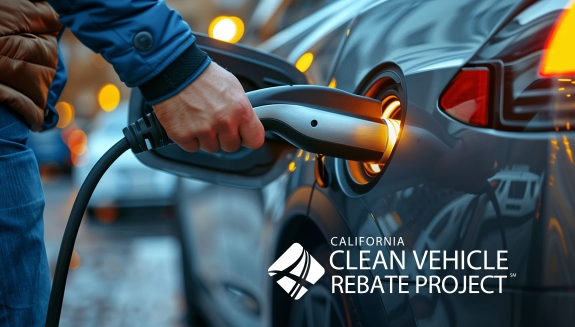California EV Rebate Program Impacts and Consumer Characteristics in 2021

Who used electric vehicle (EV) rebates in California and what role did rebates play in 2021?
As part of a series of annual data briefs examining the California Air Resources Board’s Clean Vehicle Rebate Project (CVRP), the Center for Sustainable Energy analyzed: 1) the types of consumers who used these rebates, 2) how influential the state rebate and federal tax credit were to consumers, and 3) which vehicles were replaced by rebated EVs.
Click the links to dig deeper into the impacts of CVRP EV rebates:
Consumer Characteristics
Characterizes EV adopters rebated for 2021 purchases/leases across several demographic metrics and strategic EV market segments
Illustrative findings: Despite continuing recovery from the COVID-19 pandemic, CVRP equity metrics continued to advance. CVRP consumer rebates for 2021 disproportionately benefited households with incomes less than $150,000. 73% of funding went to this group, exceeding the 68% of all new-vehicle buyers in the state who were at this income level.
Incentive Influence and MSRP Considerations
Characterizes the influence of state rebates and the federal tax credit on California EV consumers and addresses considerations related to the MSRP of rebated vehicles
Illustrative findings: 87% of program participants said the rebate was important in enabling their EV purchase (up from 82% in 2020); the percent of participants who said they would not have acquired their EV without the rebate ranged from 32% for Teslas to 51% for recipients of the Increased Rebate for lower-income consumers.
Vehicle Replacement
Characterizes replacement rates and details the age and types of vehicles replaced by rebated EVs purchased/leased through 2021
Illustrative findings: 86% of rebated EVs replaced another household vehicle, 1/4 of which were 12+ years old and > 80% of which were gasoline-fueled.

